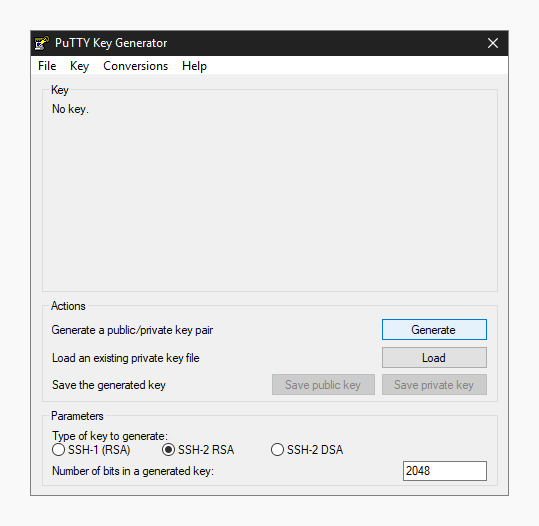Generate A Pair Of Private Keys
Once there, open a file authorizedkeys for editing. Again you may have to create this file, if this is your first key. Switch to the PuTTYgen window, select all of the text in the Public key for pasting into OpenSSH authorizedkeys file box, and copy it to the clipboard (Ctrl+C). Then, switch back to the editor and insert the data into the.
- Oct 05, 2007 To generate a pair of public and private keys execute the following command: ssh-keygen -t rsa -b 2048 You can use “dsa” instead of the “rsa” after the -t to generate a DSA key. The number after the -b specifies the key length in bits.
- If you don't already have an SSH key, you must generate a new SSH key.If you're unsure whether you already have an SSH key, check for existing keys. If you don't want to reenter your passphrase every time you use your SSH key, you can add your key to the SSH agent, which manages your SSH keys and remembers your passphrase.
- In conclusion, if none of the above-mentioned tips were helpful and the original private key cannot be retrieved, it is necessary to generate the new CSR / private key pair and reissue the certificate, making sure that the private key is safe this time.
- Save the text file in the same folder where you saved the private key, using the.pub extension to indicate that the file contains a public key. If you or others are going to use an SSH client that requires the OpenSSH format for private keys (such as the ssh utility on Linux), export the private key: On the Conversions menu, choose Export.
- Mar 03, 2020 openssl ecparam -genkey -name prime256v1 -noout -out ecprivate.pem openssl ec -in ecprivate.pem -pubout -out ecpublic.pem These commands create the following public/private key pair: ecprivate.pem: The private key that must be securely stored on the device and used to sign the authentication JWT.

To sign an assembly with a strong name, you must have a public/private key pair. This public and private cryptographic key pair is used during compilation to create a strong-named assembly. You can create a key pair using the Strong Name tool (Sn.exe). Key pair files usually have an .snk extension.
Note
In Visual Studio, the C# and Visual Basic project property pages include a Signing tab that enables you to select existing key files or to generate new key files without using Sn.exe. In Visual C++, you can specify the location of an existing key file in the Advanced property page in the Linker section of the Configuration Properties section of the Property Pages window. The use of the AssemblyKeyFileAttribute attribute to identify key file pairs was made obsolete beginning with Visual Studio 2005. /letitbit-premium-key-generator-download.html.
Generate Private And Public Key
Create a key pair
To create a key pair, at a command prompt, type the following command:
sn –k <file name>
Generate A Pair Of Private Keys Lyrics
In this command, file name is the name of the output file containing the key pair.
The following example creates a key pair called sgKey.snk.
If you intend to delay sign an assembly and you control the whole key pair (which is unlikely outside test scenarios), you can use the following commands to generate a key pair and then extract the public key from it into a separate file. First, create the key pair:
Next, extract the public key from the key pair and copy it to a separate file:
Once you create the key pair, you must put the file where the strong name signing tools can find it.

When signing an assembly with a strong name, the Assembly Linker (Al.exe) looks for the key file relative to the current directory and to the output directory. When using command-line compilers, you can simply copy the key to the current directory containing your code modules. Prtg 18 license key generator.
If you are using an earlier version of Visual Studio that does not have a Signing tab in the project properties, the recommended key file location is the project directory with the file attribute specified as follows: